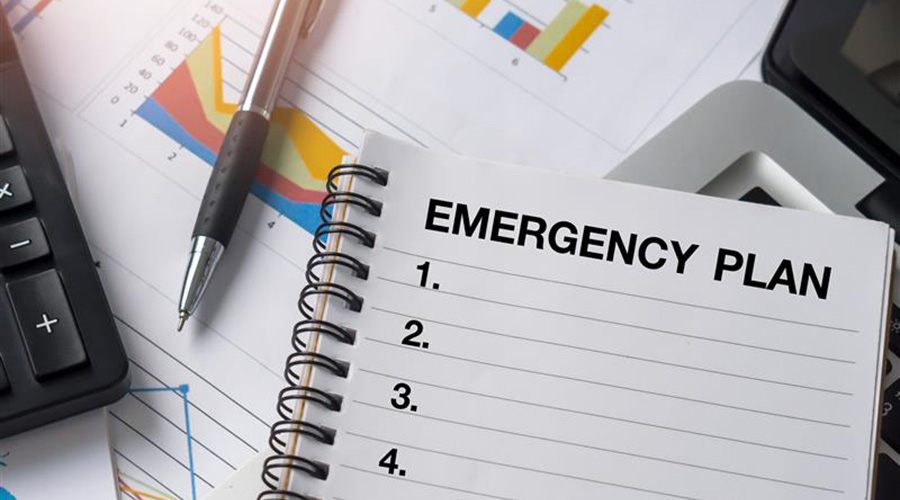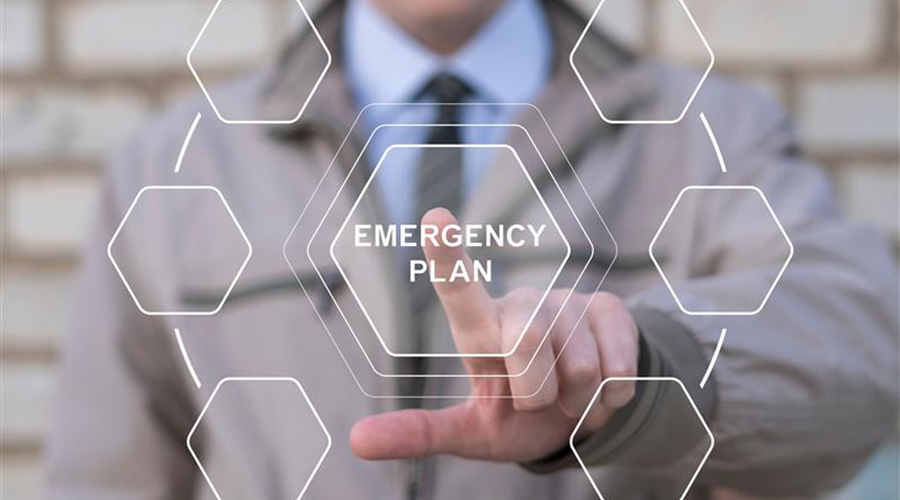8 Essential Elements for Emergency Preparedness Plans
Although the process can include additional elements, these eight are essential for the plan’s successful development and implementation.
A robust emergency preparedness plan is made up of a group of key primary components. Although the process can include additional elements, these eight are essential for the plan’s successful development and implementation:
Risk assessment. Conducting a thorough risk assessment is a critical first step in developing an effective emergency preparedness plan. The process includes identifying potential emergencies, which can fall into the categories of natural disasters, human-caused incidents and health emergencies.
Natural disasters include earthquakes, floods, hurricanes, tornadoes, and other natural events based upon the geographical location of the building. Human-caused incidents include fires, chemical spills, power outages, active shooter scenarios and cyber-attacks. Health emergencies include pandemics like COVID-19 and other outbreaks.
Once these potential emergencies have been identified, the next step is to assess and evaluate the building’s vulnerability to each emergency, including its likelihood and potential impact. This process includes assessing the physical integrity of buildings and infrastructure, as well as evaluating the way the potential risk would disrupt daily operations. Managers also must consider human factors, such as staff training and preparedness.
Emergency response procedures. Once the risk assessment is completed, emergency response procedures should be developed. This process entails creating detailed plans that cover specific procedures for each type of emergency — evacuation, lockdown, shelter in place, etc.
Emergency response procedures should include floor plans containing maps with marked exits, emergency equipment locations and assembly points. Roles and responsibilities should be defined where staff members are assigned specific roles, such as emergency coordinators, first aid responders and communication officers.
Communication systems. Next, managers should establish communication systems. Reliable systems such as intercoms, alarms and mobile alerts should be set up to quickly disseminate information. A plan for internal communication and coordination with external emergency services also should be established.
Safety equipment and supplies. Managers need to make sure that safety equipment and supplies are in stock. Safety equipment such as fire extinguishers, automated external defibrillators and first aid kits should have a regular maintenance and inspection schedule. Emergency supplies such as water, food, blankets and flashlights should be stocked in ample supply and in accessible locations.
Training and drills. Employees should be trained in emergency procedures and the use of safety equipment. Drills for different scenarios — fire drills and evacuation drills, for example — should be conducted regularly to ensure that all building occupants are familiar with the procedures.
Local authorities. Coordinating emergency preparedness efforts with local authorities is essential to a successful program. As a part of the program, managers need to establish relationships with local emergency services, such as police and fire departments and medical services. To further strengthen these relationships, participation in community drills is encouraged. Managers should strive to include building occupants in community-wide drills and training sessions to ensure coordinated response efforts.
Recovery plan. What happens after an emergency has ended? Prepare a recovery plan, develop recovery procedures, and plan for post-emergency recovery, including damage assessment, repairs and support for affected employees. Managers need to implement business continuity processes to ensure that critical operations can continue or be quickly resumed after an emergency.
Review and update. Managers need to regularly review and update emergency preparedness plans to address new risks and improve procedures. They can use feedback from drills and actual emergencies to refine and enhance the plan.
To reinforce this eight-point strategy, managers also need to keep in mind three additional elements – documentation, accessibility and community involvement. Keep detailed documentation of all plans, procedures and training sessions. Ensure emergency preparedness plans are accessible to all employees, including those with disabilities. Engage with the community to share best practices and learn from others.
Emergency preparedness from a maintenance and engineering perspective is paramount for safeguarding lives, protecting assets and ensuring business continuity. By conducting thorough risk assessments, developing comprehensive response plans, and fostering a culture of safety through regular training and drills, managers can effectively mitigate risks and enhance resilience.
Collaboration with local authorities and continuous review and improvement of preparedness plans also fortify the organization’s ability to respond to emergencies. Investing in preparedness not only fulfills legal obligations. It also builds trust and confidence among employees and stakeholders, contributing to the long-term success of the facility and the organization.
Darrell X. Rounds is director of facilities services and project management for Stellantis N.V. He leads facilities operations at its 5.8 million square foot Chrysler Technology Center. Darrell has over 27 years of industry experience, having led teams for facilities management, construction and engineering with portfolios totaling more than 53 million square feet and $7.2 billion in asset replacement costs.
Related Topics:













